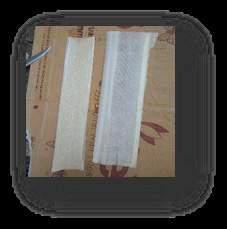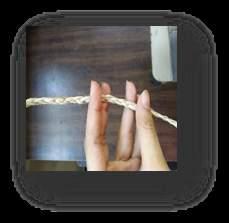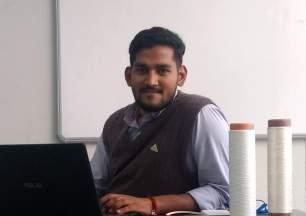
14 minute read
STARTUP STORY
NEVER STOP
Harshit Bapna
Advertisement
Founder, AIO
Driven with passion, the AIO group strongly believes in its tagline, which is NEVER STOP. The founder, Harshit finds inspiration in his brand which has been built considering some risks all the while following the passions. Started with just an idea and vision, AIO group today stands strong in the market for sportswear. The brand and its founder believe that to achieve heights, the first thing one needs to do is start. Working diligently and consistently follows.
Tell us about your brand, what is it about? AIO Sports was formed with a vision to create customized quality sportswear to take care of one’s needs and at the same time is affordable for all. We believe, that fitness is for everyone and with our special dedicated designs and best in class fabric; we aim to enable the sports persons to deliver best in their field. We say #NEVER STOP! The brand AIO stands for All In One, implying one stop destination for all the fitness enthusiasts. We are professional sports wear supplier, distributor and also import/export company; specializing in all kinds of customized sports apparels providing high quality custom sportswear. What was the idea, design thinking behind the concept of the AIO brand? To start with, I am very thankful to my parents for their immense support and the trust they have in me. It gave me courage as a fresh College graduate to leave my campus placement offer and pursue my dream of a start-up. I am a Textile Engineer and also a sports enthusiast. The sports sector is majorly dominated by big International giants. The quality sportswear supplied by these companies are super expensive to be accessible for all brilliant budding sports person in our country. I took it as a challenge and opportunity to create quality brand which can serve the need of our fitness lovers, across all sports and designed for all age groups. With this vision in my mind, the first step was to find a team with complementary competencies to make this happen. Having B.Tech in Textile Engineering, I have a good knowledge of fabric and manufacturing and we started with a small team of 3-4 young, agile and passionate people. We had national level player in our team to guide us on special requirements for different sports. An Industry expert to help us find the best in class vendors for all the required fabrics. A designer who with his fantastic designs can add personality to the sportswear for you and your team. Complementing them, I took care of manufacturing. Without an MBA degree, I learned sales and marketing fundamentals by networking, and trust me, on the job training is the best degree. I am very proud to say that we have now our own manufacturing set-up with 35+ employees and independent teams working on logistics, designing, printing and manufacturing. Within a very short time of 2 years, we have delivered our products to 100000+ customers in India as well as oversees. Our consumers are very happy with our products and services and majority of them come back with orders which is very motivating and rewarding for us. We aim to build a long-term relationship with all our customers and stand by our commitment to provide high quality products. The strategy is to remain proactive, non-traditional and customize supply chain solutions for our customers. We treat customers’ IPs highly confidential and take an integrated approach to serve
customers’ needs from concept to distribution. We stand out to be an iconic vendor in the sports goods industry with broad product categories, and best quality to meet the demands of our customers. As a responsible corporate citizen and supplier, we welcome every opportunity to partner with global companies and customers without limiting ourselves in the form of collaboration. What are the product categories under the brand? Sports Jersey’s, shorts, lower, caps, tracksuits, gym wear, socks, tights, corporate wear, wrestling wear, cotton t-shirts-with all more than 200+ patterns, and 10000+ ready customized designs. What are the fabrics used? Knitted fabrics, jersey fabric, ribbed knit, lycra-spandex-cotton knit, terry knit, fleece, interlock knit, etc. What were the challenges that the brand faced during COVID-19 and how are situations improving? 2020 was indeed a challenging year for us and as in case with every other small start-up, we were hit in the beginning when physical orders were very limited. No one has previously experienced such a time and how best to handle the situation. However, we utilized the time to strategize and equip ourselves to be ready as soon as we can resume, in safe way. The logistics was hit significantly and there were challenges in getting the raw material on time. I am very fortunate to have extremely supporting team and even with delay in getting the fabric, we managed to deliver all the orders on time. We have made our premises very safe to work with all proper measures on hygiene, sanitization and distancing and have been operating very efficiently. There has been a surge in demand for sportswear and leisurewear during COVID-19, what are your observations on the same? Surely there has been a surge in sportswear and leisurewear. Owing to work from home setup and also with increased awareness around fitness, more than ever before, sports and fitness section is ought to grow. We have also been receiving more and more orders and I am very happy to see more people trying to get into fitness routine or some sports. We are proud to meet our consumer demands with our exciting product range. As an entrepreneur, what advice would you give our readers, that has worked best for you? I am a true believer of our tag line and this is the advice I also want to give our readers and all the entrepreneurs out there #NEVER STOP. You need to take some calculated risks and move forward. I started my journey just after College with an idea and vision, you need to start, work diligently and consistently. Always be ethical in your work and motivate your team. My team is like an extended family to me. It is always a team effort to make anything successful. Use your network, get your dream team formulated and then you will #NEVER STOP. Wishing all our readers a great start and successful journey in their business!

RUGVEDA PISAT SUKHMIT VAMAN
Student Mentor
Department of Textile and Apparel Designing Sir Vithaldas Thackersey College of Home Science, SNDT Women’s Universtiy, Mumbai
BANANA FIBRES : THE UNKNOWN GREEN
Banana paper have a wide variety of applications. The most common banana fiber products today are rope and cordage. These fibres are mostly used in making handicrafts and home decoration.
Abstract Everyone gets curious as they hear about “Banana Fibers”, many questions arise. Really?! A fabric made from banana? How does it look like? How does it feel when we wear it? Our Country is blessed with the million metric tons of banana production every year, with lot of beneficial characteristics, Banana Fiber is making its place in the fashion industry. Many Fashion designers and clothing lines are making use of Banana Fibres in their upcoming projects. This fiber is perfect as it is eco -friendly and biodegradable. Introduction India has the largest land under banana cultivation. During the year 2020, it accounted for around 32 million metric tons of Banana Production, which is an increase of about one million metric tons from the previous year. Currently the leading state producers of banana are Tamil Nadu, Maharashtra and Gujarat. Bananas are harvested two to four times a year and the stems are usually cut and thrown away. With so many benefits, This plant has been a source of high quality textiles for ages and is well known as MUSSA TEXTILE, as its scientific name is called MUSA ACUMINATA. According to archaeologists, the banana plant was first found in the Kuk valley of New Guinea around 8,000 BCE. The earliest evidence of banana fibres was found in the 13th century in Japan. In Japan, the fibres were used as a substitute for silk and were woven into garments. In Nepal, the outermost sheaths of the banana plant were used for making mats and sunshades. But Later its popularity faded as cotton and silk became popular. Banana fibre is not a new discovery but certainly a unique one. Extraction In the olden days, the fibers were extracted manually. Firstly, the Sheaths were separated from the banana pseudo stems, then the sheaths were kept for retting for around 10 – 15 days. Then the retted sheaths were beaten manually to loosen the fibres, then they were washed, cleaned and kept for sun drying. This traditional practice, yields the best quality of fibre but its laborious and time consuming. Revolution in the Banana Fiber Industry The Banana Fiber separator is one of the innovative ventures incubated at TREC-STEP. The entrepreneur behind this venture is Mr. K. Murugan, who is a mechanical engineer. Due to the use of machine, we can see a fifty times increase in fibre production compared to manual process. It is user-friendly, cost effective and safe to operate. It produces 30 kgs of fibre per day. The machine processes the separated sheaths directly into the fibres. First, these sheaths from banana pseudo stem are put inside the machine one at a time. As the sheath is inserted, the Beater in the machine helps to open up the fibres. The Revolving drums inside the machine, separates the fibres from the short fleshy parts. Thus, when the sheath is pulled out, the fleshy part gets removed due to mechanism and fibres can be extracted. After collecting the fibres, they are washed and cleaned properly as they still contain a gummy substance and sun dried. The dried fibers are fed to the hooks of the spinning wheel for the yarn formation. When the wheel is rotated, due to the spinning mechanism, the fiber gets twisted and is spun together. After spinning, it is wound over a bobbin or a spindle. But on a large scale, these fibers can be spun
using almost any method of spinning. After yarn formation, it goes for weaving. Weaving process of banana fibers is same like all other fibers, it gets easily woven on handloom. Banana Fibre Blends Banana fibers get easily blended with both natural and synthetic fibres. Blend of 80% banana and 20% unbleached cotton fibers gives us a fabric which is lightweight and very pleasant to wear. This fabric can be easily used in garments and in home decoration. Blend of 50% banana and 50% bleached cotton fibers, gives us a fabric which has thick, original look, which is shinny at the same time. This fabric will suit for heavy garments, also it is good choice for soft furnishing products. Blend of 50% Banana and 50% wool, gives a fabric which is thick and warm, will be an amazing choice for winter clothes and coats. The blend of Polyester with banana fiber, at a 50/50 ratio gives the same look as cotton blend. Structured Banana Pineapple Silk, a blend of 50% of Banana and 50% of Pineapple, gives us a fabric which is soft yet structured. This blend is perfect for adding structure to a garment, or even they can be a best choice for lampshades. Properties It is a multicellular fiber with a chemical composition consisting mainly of cellulose, lignin, and hemi cellulose. The fiber has a scaly and cellular structure. In terms of physical properties, the banana fiber has good modulus of elasticity, tensile strength, and stiffness. The average fineness is 2400Nm. It is a strong fiber and has great moisture absorption quality. The appearance is shiny, which depends on the extraction and spinning processes. Applications Banana paper have a wide variety of applications. The most common banana fiber products today are rope and cordage. These fibres are mostly used in making handicrafts and home decoration. By increasing and decreasing the thickness of the paper we can get a variety of products from tissue paper to a thick card sheet. Sanitary Napkins is also one of its application; a lot of research is going on to make it is as a domestic product. Gujrat based Navsari Agriculture University conducted a Research; it was found that the paper made from this fibre has life of over 100 years, and can be folded as many as 3,000 times. Japan uses these fibres for the Yen currency. The second-generation Mercedes-Benz A class designed the spare tyre covered with polypropylene and thermoplastic embedded with banana fibres, which can withstand stone strikes and exposure to the environment. Tea bag paper is made from banana paper by decreasing its thickness to minimal. A Firm in Philippines has started producing face masks using banana paper and Another firm by using banana textile. A test by The Department of Science and Technology, tested banana fibre for filtration. The results showed that banana paper filtration rate is seven times better than cloth. It has lower water absorption than an N95 mask. The major applications are found in Textile Industry. A variety of sarees can also be made from banana fibers, or banana fibers blended with other natural fibers. But the cost of each variety depends on its extraction process, spinnability and the quality of fiber used. Care of Banana Textiles Banana cloth is somewhat prone to shrinking and colour bleeding. It needs to be washed with cold water. Machine wash can be done in 40°C, but mild detergent, which does not cause bleaching effect. Hang drying is the best way. While ironing, a low iron setting with no steam is recommended. Can Banana Fibre be The GREEN APPAREL OF FUTURE? Yes, fabric made from banana fibre can be termed as the next green apparel of the future. According to the researchers, the fabric can be cheaper than cotton and linen, if it is produced in large scale. In major banana-growing regions, discarded banana stalks sitting around every year are just waiting to be termed into useful textile. Fabrics made from these fibres have good shine, light weight, have quick moisture absorption quality. It can work as an environment friendly substitute to many popular fabrics. Can Banana Fibres lessen the demand for Cotton? Everyone is aware of environmental hazards caused from the cultivation of conventional cotton. Cotton production is the second largest agricultural use of pesticides in the world which are known for cancer-causing chemicals. However, its demand in the global textile industry has not been affected. Banana fibre textiles can definitely lessen the demand for cotton to a large extent. But are not able to completely replace cotton, as also it works well when blended with cotton. Extraction of Banana Fibres at home! So first, I cut the whole stem, into a small piece, then separated the sheaths. Then I cut the sheath in vertical way. Then I removed the gummy substance, for that, I pressed knife over it and tried to remove the gum. Once the gum was completely taken out, I got very fine, shiny and strong fibers. I did this for the three parts of sheaths, like innermost, middle and outermost, and got to see three varieties of fibers. The difference between the three was the roughness, like the outermost fibers were very rough comparative to the other both, also, the fibers from innermost part were white, shinny and smooth, comparative to the other two. So, I braided the finest fibers and made a choker out of it!!
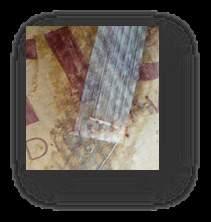
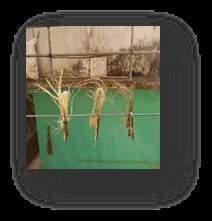

Separation of sheath
Sheath cut in half
Removal of gum Extracted fibres
3 Varities of dried banana fibres
Braided fibres Conclusion The recent environmental turbulence has made people realise the need to be environmentally responsible and accept eco-friendly fabrics. Banana fibre is a good alternative to all the synthetic and natural fibres. Since Banana fibre is fully plant origin natural product, it can be easily blended with other natural fibres, also can be easily dyed and printed. India will probably be the location where banana fibre textiles will make their first large public offering. References
https://textilevaluechain. in/2020/08/06/banana-fibre/ https://www.fibre2fashion. com/industry-article/7589/banana-fibre-green-apparel-of-thefuture#:~:text=Eco%2Dfriendly%20 fabric%20of%20the,fabric%20 from%20the%20banana%20fibre. https://www.fibre2fashion.com/industry-article/7654/banana-fibre-a-revolution-in-textiles#:~:text=Organic%20 banana%20fibre%20is%20 used,are%20made%20from%20 banana%20fibre. https://www.onlineclothingstudy. com/2020/10/banana-fibre-forsustainable-fashion.html https://www.textileschool. com/131/banana-fibers-naturalplant-bast-fibers/ https://www.textiletoday.com.bd/ clothing-banana-fiber/ https://www.the-sustainable-fashion-collective.com/2019/06/03/ what-is-banana-fibre-and-how-doyou-make-textiles-from-it https://thephoenixcompany.home. blog/2019/05/18/care-instructions-for-particular-fabrics-andgarments/ https://www.intechopen.com/ books/banana-nutrition-functionand-processing-kinetics/bananapseudo-stem-fiber-preparationcharacteristics-and-applications
